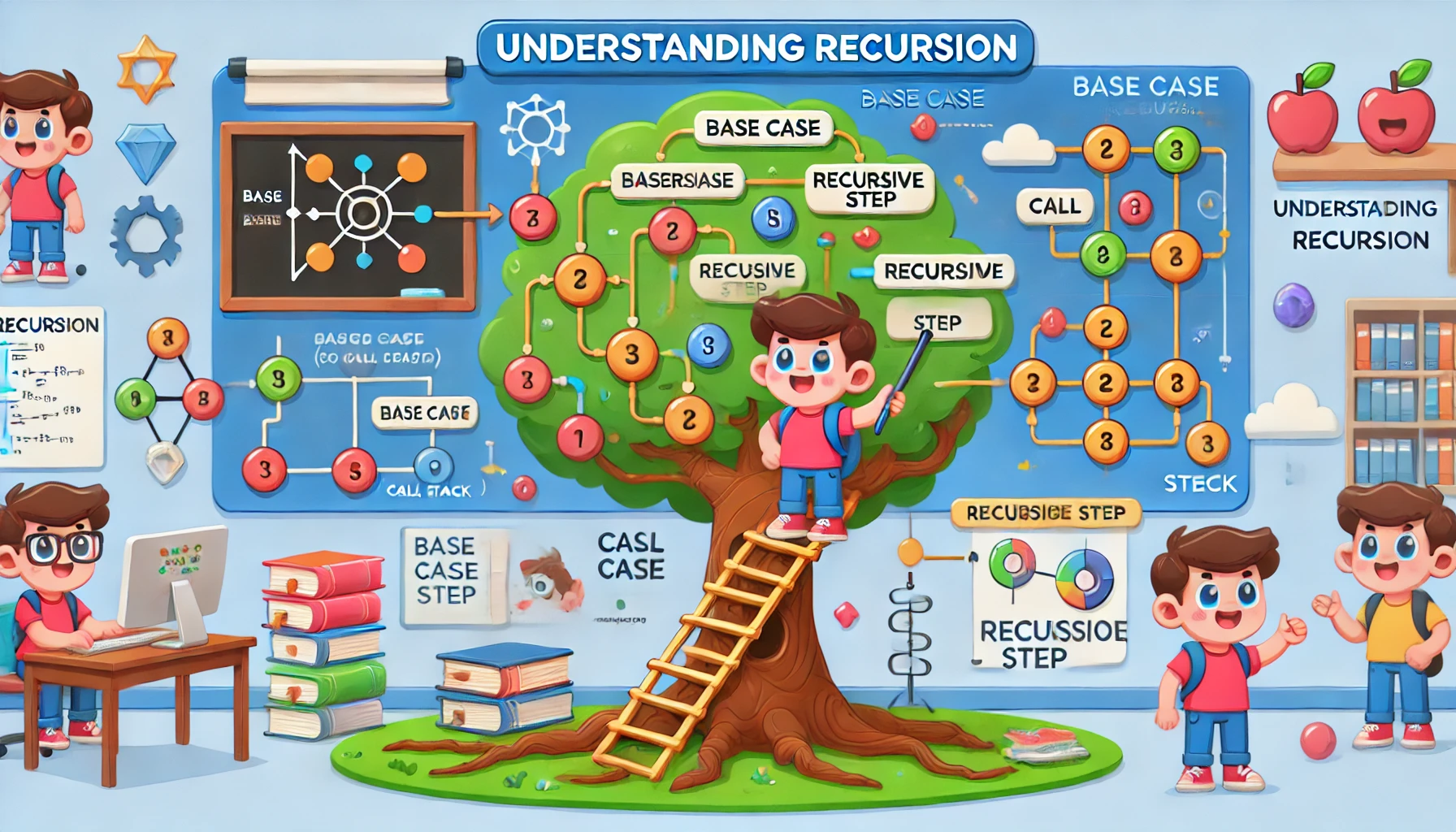Why Start Learning Algorithms 101 with Recursion
Fundamental Concept in Computer Science
Recursion is one of the core principles in computer science and is foundational for understanding many advanced topics. Learning recursion early helps build a strong base for tackling more complex algorithms and data structures.
Key Reasons
-
Intuitive Problem Solving
- Natural Fit for Divide and Conquer: Many problems naturally fit into a recursive framework, where a problem is divided into smaller sub-problems that are solved independently.
- Simplifies Complex Problems: Recursive solutions can be more straightforward and easier to understand compared to iterative ones, especially for beginners.
-
Basis for Advanced Topics
- Data Structures: Many data structures like trees and graphs are inherently recursive. Understanding recursion is crucial for working with binary trees, AVL trees, and other hierarchical structures.
- Algorithm Design: Recursion is essential for designing algorithms such as divide-and-conquer (e.g., quicksort, mergesort) and dynamic programming.
-
Improves Logical Thinking
- Break Down Problems: Recursion encourages breaking down problems into smaller, manageable parts, fostering a problem-solving mindset that is crucial in algorithm design.
- Base and Recursive Cases: Thinking in terms of base and recursive cases improves logical reasoning and helps in understanding termination conditions and problem constraints.
-
Foundation for Iteration
- Understanding Call Stack: Recursion helps understand how the call stack works, which is essential for grasping iterative solutions that involve manual stack management.
- Conversion Skills: Learning recursion first makes it easier to understand and convert recursive solutions to iterative ones and vice versa, giving a comprehensive understanding of both approaches.
Definition
Recursion is a programming technique where a function calls itself directly or indirectly to solve a problem. It typically breaks down a problem into smaller, more manageable sub-problems until a base condition is met, which stops the recursion.
Key Concepts
- Base Case: The condition under which the recursion stops.
- Recursive Case: The part of the function where it calls itself with a subset of the original problem.
Example Code
Python
Let’s implement a simple recursive function to calculate the factorial of a number.
def factorial(n):
# Base case
if n == 1 or n == 0:
return 1
# Recursive case
else:
return n * factorial(n - 1)
# Test the function
print(factorial(5)) # Output: 120JavaScript
The same factorial function can be written in JavaScript as follows:
function factorial(n) {
// Base case
if (n === 1 || n === 0) {
return 1;
}
// Recursive case
else {
return n * factorial(n - 1);
}
}
// Test the function
console.log(factorial(5)); // Output: 120Tips for Using Recursion
- Always Define a Base Case: Ensure there is a condition to terminate the recursion to prevent infinite loops.
- Think in Terms of Smaller Problems: Break down the problem into smaller instances of the same problem.
- Understand the Call Stack: Each recursive call adds a new frame to the call stack, which can lead to stack overflow if the recursion is too deep.
Converting Recursion to Iteration
Recursive to Iterative Example: Factorial
Recursive Factorial:
def factorial(n):
if n == 1 or n == 0:
return 1
else:
return n * factorial(n - 1)Iterative Factorial:
def factorial_iterative(n):
result = 1
for i in range(1, n + 1):
result *= i
return result
# Test the function
print(factorial_iterative(5)) # Output: 120Converting Iteration to Recursion
Iterative to Recursive Example: Sum of an Array
Iterative Sum:
def sum_array(arr):
total = 0
for num in arr:
total += num
return total
# Test the function
print(sum_array([1, 2, 3, 4, 5])) # Output: 15Recursive Sum:
def sum_array_recursive(arr):
if len(arr) == 0:
return 0
else:
return arr[0] + sum_array_recursive(arr[1:])
# Test the function
print(sum_array_recursive([1, 2, 3, 4, 5])) # Output: 15Converting Between Recursion and Iteration: Tips
- Identify the State Variables: In recursion, the state is often maintained through function parameters. In iteration, you maintain state through loop variables.
- Use a Stack for Simulation: For complex recursive functions, use an explicit stack (a list) to simulate the call stack in iterative solutions.
- Understand the Problem Structure: Recognize how the problem is being broken down in recursion to translate it accurately into a loop-based structure and vice versa.
Conclusion
Recursion is a powerful tool in programming for solving problems that can be broken down into smaller, repetitive sub-problems. Understanding how to convert between recursive and iterative solutions enhances your flexibility in approaching different algorithmic challenges.
Recommend Resources:
Recursion Full course BY ABDUL BARI RAKIB
Recursion (3 hours course) – Inside code Inside code
Recursion for Beginners – Fibonacci Numbers NeetCode

Leave a Reply